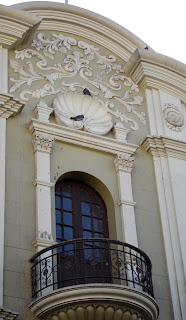



Vicunas are found in semiarid rolling grasslands and plains at altitudes of 3,500-5,750 meters. These lands are covered with short and tough vegetation. Due to their daily water demands, vicunas live in areas where water is readily accessible. Climate in the habitat is usually dry and cold.
The vicuna is the smallest living species among the family Camelidae. Head and body length is 1,250-1,900 mm, tail length is 150-250mm, and shoulder height is 700-1,100mm. A slender body and relatively long neck and limbs give a vicuna an elegant appearance. The ears are long, pointed, and narrow. The head is round and yellowish to red-brown in color. The long neck has yellowish red bib. The underside and inner parts of the flanks are dirty white. A strange mane, 20-30cm long, with silky-white hair adorns the chest. Overall, the pelage is uniform and soft. Compared to the similar-looking Lama guanicoe, the vicuna is one fourth the size, its body is paler, and it lacks callosities on the inner sides of the forelimbs. Relative weight of the brain is greater than that of the guanaco. Among living artiodactyls, vicunas have unique, rodent-like incisors that are covered with enamel on only one side. Features believed to be adaptations to high altitudes include a large heart, specialized blood cells with hemoglobin of greater affinty for oxygen, and a weight that is 50 percent heavier than other mammals of the same size. Vision and hearing is good, although the former is far more developed. Olfaction is fairly poor. Mating begins in March and April. They mate while lying down on their chests, and copulation lasts 10-20 minutes. After 330-350 days of gestation period, a female gives birth to a single offspring of 4-6 kg in February and March. The female gives birth in a standing position, and it neither licks nor eats the afterbirth. The mother mates soon after giving birth. The young is mobile after just 15 minutes at birth. It remains close aside its mother for at least 8 months. It continues to suckle until it reaches 10 months. Young females at this stage are expelled from the herd by the dominant male. For young males, this happens at 4-9 months. Expelled females are usually accepted into another group. Females are capable of mating when they reach 2 years. Some are still reproductively active at 19 years. Vicunas in the wild live up to 15-20 years. In captivity, an individual was reported to have lived 24 years. Vicunas are alert and shy animals that flee very rapidly. They are capable of running 47 km/hr at an elevation of 4,500 meters. Movement is extremely graceful compared to any other hoofed animal. When in danger, vicunas make a clear, whistling sound. The dominant male warns its herd with an alarm call, and positions itself between the threat and the members. A single dominant male leads a group of females and juveniles. It determines the range of the territory and group membership, and it drives other males away from the family. The territorial male keeps its members closely together at a distance of no more than 160ft. Group members display submission to the male by laying their neck over the back. Family groups are closed societies, excluding alien males and, at times, preventing even young females from joining. The average size of a family is 6-10 individuals depending on the feeding condition in the territory. Vicunas are one of the few ungulates to possess a feeding territory and a separate sleeping territory. They are diurnal, and at night they retreat to their sleeping areas at higher altitudes. Adult males that do not lead any herd become either solitary, or they form a large group of 30 or even 150 individuals. However, there is low cohesiveness among the members of these bachelor herds, and hierarchy is absent. The vicuna is strictly a grazer. Its diet consist of mostly short perennial grasses. The incisors are specially adapted to its diet. They are large and continuously growing as in rodents. The young often graze while lying down. Both young and adults chew cud when they are at rest. Unlike most other camelids, the vicuna requires daily intake of water. Therefore, when selecting a territory, it searches an area with favorable watering sites. The average feeding range is 184ha.
In the past, vicunas were an important source of wool and meat. At the time of the Incas, vicunas were captured, shorn and released into the wild again. During 19th and 20th century, there was a huge commercial demand for the wool. Recent law only permits use of wool shorn from a living vicuna. The vicuna is classified as vulnerable by the IUCN, and as endangered by the USDI. During the period of the Incas, the total population reached 1.5 million. With the fall of the empire, the number dropped dramatically due to massive slaughter by the conquerors and the settlers. By 1960, the number decreased to only 6,000. Recent efforts of establishing national parks and organizations for protection of vicunas have brought the population back up to 125,000. About half of this number live at the Pampas Galeras National Vicuna Reserve in Peru. Some natives of the Andes and the Aymara still worship the vicuna as a daughter of the fertility goddess Pachamama.


















































